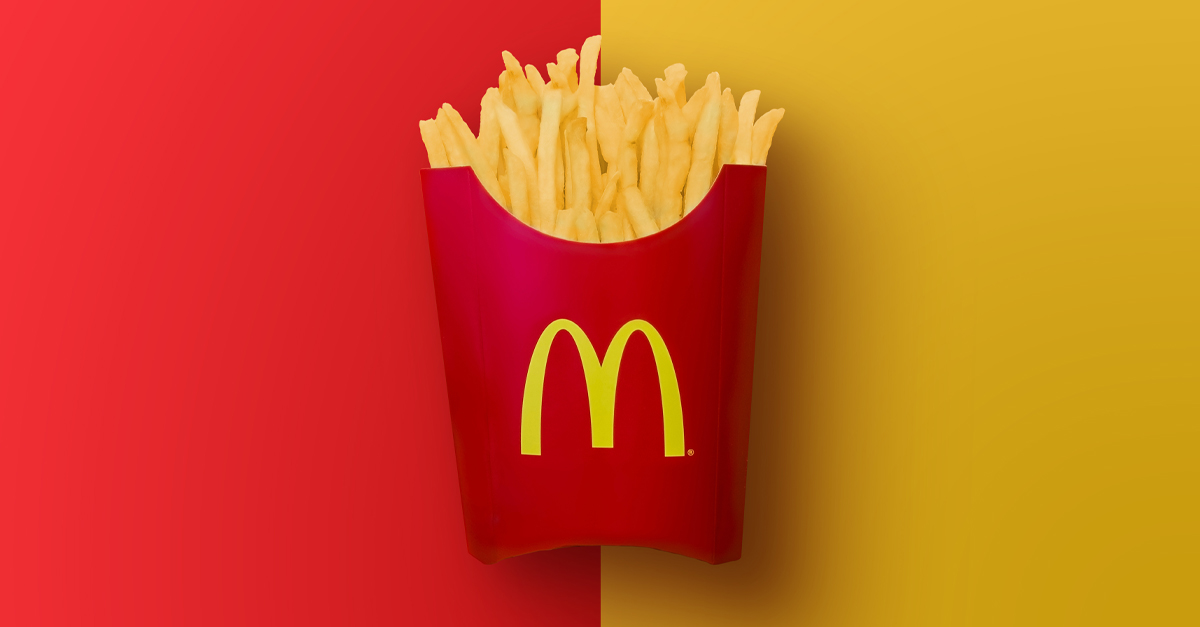Time Travel Through Your Wallet
1960s America is one for the books with some of the most significant years in American history. From the Civil Rights Movement and a pop music explosion, to an intense era of war and political violence, the 60s were marked by both peace and turbulence.
But while the commotion played out on the evening news, many American families were still living normal everyday lives—lives that looked drastically different from today’s modern world. And although many things were cheaper back then, some things were significantly more expensive.
Let's take a look at the cost of living in the 1960s. How much has changed?

A Haircut Cost $1.95
The average price of a men’s haircut in 1966 was $1.95—which is equal to $19.03 in today’s currency. For women, it was a bit more, at $2.16 ($20.79 today). The permanent wave, however, was a multi-step process that cost much more, at a whopping $12.15 ($118.57 today).
The most expensive city for a men’s haircut was Chicago, where the price averaged a $2.48. For women, the average haircut was most expensive in Washington DC, at a whopping $3.31.
 Unknown authorUnknown author, Wikimedia Commons
Unknown authorUnknown author, Wikimedia Commons
Most Adults Were Smokers
As you may know, smoking has always been a problem in America, but it was a particularly large problem in the 60s. According to a report of the Surgeon General’s Advisory Committee on Smoking and Health, 42% of American adults were smokers throughout the early years of the 1960s. Smokers were everywhere—and the price didn't help.
However, smoking has been on a downward trend ever since. As of 2021, only 11.5% of American adults were smokers.
Smokes Cost $0.26 Per Pack
…and that includes tax! At only $0.26 per pack, it’s no wonder most adults were smokers. For the sake of inflation, in 2025 that would still only be $2.84.
A pack of smokes in today’s world averages close to $10 or more.
72% Of Adults Were Married
At the beginning of the 1960s, marriage was still commonly seen as a rite of passage into adulthood. In fact, 72% of American adults were married in 1960. The median age for brides at that time was 20.1, and for grooms it was 24.2.
Believe it or not, the average wedding cost $700 back then. In today's money, that would be about $31,000.
 Israeli GPO photographer, Wikimedia Commons
Israeli GPO photographer, Wikimedia Commons
Many Grocery Items Cost Less Than A Dollar
Believe or not, a single dollar bill had a lot of buying power in the 60s—especially at the grocery store. For example, a five-pound bag of flour was only 61 cents; a dozen eggs cost 66 cents; a pound of ground beef was only 55 cents; and a box of generic corn flakes was only 32 cents.
In today’s dollars, these items range between $3.00-$6.00, each.
Pro tip: some grocery items can now be found in dollar stores.
Long Distance Charges Were Outrageous
Strangely enough, phone service—particularly long-distance calling—is more affordable today than it was in the 1960s. For most of the landline era, phone calls were charged based on duration and distance of the call.
In 1960, a three-minute call from New York to San Francisco was $2.25. With inflation, that call would cost a whopping $19.89 today. And the cost went up by the minute.
Housing Was Affordable
In 1960, the median home value in the US was only $11,900. In today’s dollars, that would equal around $126,800. The average home was also decently sized at about 1,500 square feet, rising to just under 2,000 throughout the decade. Most homes had 4-6 bedrooms, too. That's a pretty big home for less than $150,000.
Also, the median annual family income kept a solid pace at $5,600—making the price of a home cost about two years’ wages. Today, the average 2-4 bedroom home in the US has soared to well over $300,000.
 Cortlandt Van Dyke Hubbard, Photographer, Wikimedia Commons
Cortlandt Van Dyke Hubbard, Photographer, Wikimedia Commons
A Brand New Car Cost Less Than Two Grand
In the 1960s, a new car typically cost somewhere between $1,700 and $4,900, depending on the model and manufacturer.
A brand new 1960 Austin-Healey Sprite, for example, cost $1,795—while a brand new 1963 Cadillac Executive cost $4,895. Thanks to inflation, in today's money, the price of that Cadillac would be equivalent to around $52,000.
 Mr.choppers, Wikimedia Commons
Mr.choppers, Wikimedia Commons
College With Room And Board Was $243
Of course, this number varies based on the school and the program, but on average, a post secondary public education with room and board included was only about $243 per year—which would be the same as $2,625.38 today. Private schools cost a bit more at $1,011. This is significantly lower than today's average.
In 2023, one year at a public college averaged $9,750 per year (make that $35,248 for private schools).
Minimum Wage Was $1 Per Hour
According to the Bureau of the Census, Department of Commerce, in 1960, the average minimum wage in America was $1 per hour—which would equal $10.91 today. The average annual salary at this time was $5,600.
Believe it or not, that was more than it is now. The federal minimum wage in the US in 2025 is $7.25 per hour. With that said though, the minimum wage varies greatly by state. District of Columbia currently has the highest minimum wage at $17.60 per hour.
The Family Dynamic Was Drastically Different
During the early years of the 1960s, the American family dynamic was still very traditional in a sense, with most families consisting of a working father, a stay-at-home mother, and children. Traditional gender roles were common, with men being the primary breadwinners and women focusing on homemaking and childcare.
Unlike today, families were able to live comfortably on one income.
 Thomas Patrick Norton II, Wikimedia Commons
Thomas Patrick Norton II, Wikimedia Commons
Inflation Was Much Lower
The 1960s followed a period of post-war economic growth that saw a far lower inflation rate than later decades. In fact, the annual inflation rate in the US generally hovered around 1%.
In 2025, the US inflation rate is projected to be around 3.1%—up from 2.9% in 2024.
 Unknown authorUnknown author, Wikimedia Commons
Unknown authorUnknown author, Wikimedia Commons
The Unemployment Rate Was 5.5%
While inflation was lower, the unemployment rate was actually higher, sitting at 5.5%. At this time, the economy was still adjusting from the end of WWII and there were still effects from the Great Depression.
The unemployment rate in the US today sits at 4.2%—which is up from 3.6% in 2023.
 The New York Public Library, Unsplash
The New York Public Library, Unsplash
A Basic Radio Cost $10
Believe it or not, in the 60s, electronics cost significantly more than they do today. A basic radio could cost $10, and a moderately priced stereo system could be around $1,000—which would equal a whopping $10,914 in today’s funds.
A 21-Inch TV Had To Be Financed
Considering the 60s were the birthplace of a lot of cutting-edge electronics, it’s no surprise that owning a television was the ultimate flex. In 1960, a black and white RCA 21-inch console television cost $268 (that would be $2,925.12 today). Most people financed it, paying $10 a month.
In the later part of the decade, TV prices dropped a bit and color options became available.
Medical Costs Were Significantly Lower
Healthcare costs, specifically hospital stays, in the 1960s were a fraction of what they are today. A hospital room, on average, would cost about $8 per day—which is about $87 today.
In 2025, a hospital room cost around $2,600. However, this varies by state. In California, the average cost of a hospital stay is over $4,000 per day.
Movie Tickets Cost $1
In the 1960s, a movie ticket cost about $1, which is equal to $10.91 today. While this isn’t that far off from the typical $12 movie tickets today, it should be noted that with streaming services commonly used today, we have changed the way we consume entertainment.
Air Travel Was A Luxury
Air travel in the 60s was not something just anyone could indulge in. A cross-country flight would cost around $300 ($3,200 today), and an international flight would cost double that.
Today, a cross-country flight in the US can range from $96-$800 or more, depending on destination and airline.
Jeans Cost $5
Clothing prices in the 60s were significantly lower though. A pair of high-quality jeans cost around $5—which would equate to $54 in today’s currency.
But in 2025, a good pair of jeans can range from $80-$200 or more.
Gas Cost 31 Cents Per Gallon
Gas prices have been rising for years. Currently, in 2025, the average gas price in the US is $3.15 per gallon. Though it changes often.
In 1960, the average price of gas was 0.31¢ per gallon. Thanks to inflation, that would equate to $3.35 today.
Public Transit
The average public bus ticket in 1960 cost around 15 cents. By the end of the decade, however, it had risen to about 35 cents.
Today, the average bus fare in the US cost about $1.79.
 savoryexposure, Wikimedia Commons
savoryexposure, Wikimedia Commons
A Bottle Of Coca Cola Cost 10 Cents
Believe it or not, Coca Cola managed to keep the cost of a bottle at only five cents for over seventy years! However, that changed beginning in the sixties when a bottle of Coca Cola began selling for 6, 7, and 10 cents.
Even at 10 cents per bottle, in today’s dollar that was only $1.09. This price has more than doubled by 2025.
A Whole McDonald’s Meal Cost 35 Cents
According to personal accounts, a McDonald’s meal consisting of a burger, fries, and a shake would cost between 35 and 50 cents during the 1960s. The Big Mac was introduced in 1968 and cost 45 cents. Even with inflation, that whole meal would be less than $5 in today's funds.
Today, a Big Mac typically costs $5.99—for just the burger.
A Slice Of Pizza Cost 15 Cents
In 1960, a single slice of pizza cost only 15 cents. It is often compared with a subway ride, which also cost 15 cents at that time.
Today, a slice of pizza in the US averages about $3-$5.
A Six-Pack Of Beer Cost Less Than Two Bucks
Booze consumption in America in the 1960s was significantly high—and beer was often the drink of choice. In 1960, a six-pack cost about $1.70. Of course, this depended on the brand and location.
When adjusted for inflation, this number—which works out to be around $18—is not actually cheaper. In fact, it cost more back then than it does now. A six pack of beer today costs around $8-$12.
You May Also Like:
The 25 Best Cars Of The 1960s
24 Tricks Moms Used In The 60s To Stretch Budgets
Things That Were Way Cheaper In The 1960s (Accounting For Inflation)
























